Are you looking to reduce your environmental impact and create a more sustainable home? In this article, we’ll guide you through practical steps to make your home more eco-friendly. By assessing and reducing energy consumption, implementing sustainable waste management practices, incorporating renewable energy sources, choosing eco-friendly building materials, maximizing water efficiency, promoting sustainable transportation options, creating a chemical-free living environment, cultivating a sustainable garden or green space, and educating and engaging your household in eco-friendly habits, you can contribute to a greener future. Let’s get started!
Assessing and Reducing Energy Consumption
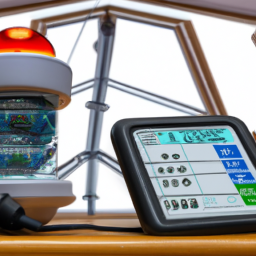
To reduce your energy consumption, start by replacing old light bulbs with energy-efficient LED ones. LED lights use up to 75% less energy and last up to 25 times longer than traditional incandescent bulbs. By making this simple switch, you can significantly reduce your electricity usage and save money on your monthly bills.
In addition to upgrading your lighting, consider investing in energy-saving appliances. Appliances such as refrigerators, washing machines, and dishwashers consume a significant amount of electricity. Look for appliances with the ENERGY STAR label, which indicates that they meet strict guidelines for energy efficiency. These appliances are designed to use less energy without compromising performance.
Another way to reduce your energy consumption is by optimizing the use of natural light in your home. During the day, open curtains or blinds to let in sunlight instead of relying solely on artificial lighting. This not only saves energy but also creates a more pleasant and inviting atmosphere.
Furthermore, make it a habit to turn off lights when leaving a room or when they are not needed. This simple action can have a significant impact on reducing unnecessary energy usage throughout the day.
Implementing Sustainable Waste Management Practices
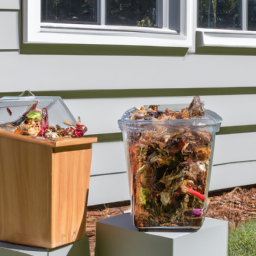
Reduce your waste by implementing sustainable practices like composting and recycling. Waste reduction is an essential aspect of making your home more eco-friendly. By managing your waste in a responsible way, you can minimize the environmental impact and contribute to a healthier planet.
Composting is a great way to reduce organic waste while also creating nutrient-rich soil for your garden. It involves collecting food scraps, yard trimmings, and other biodegradable materials and allowing them to decompose naturally. This process not only diverts waste from landfills but also reduces methane emissions, which are potent greenhouse gases.
To start composting at home, designate an area in your backyard for a compost bin or invest in a small composter that fits on your patio or balcony. Collect fruit and vegetable peels, coffee grounds, eggshells, grass clippings, and leaves to add to the compost pile regularly. Remember to turn the pile occasionally to promote decomposition.
In addition to composting, recycling is another crucial practice for waste reduction. Check with your local recycling facility or municipality about the types of materials they accept for recycling. Common items that can typically be recycled include paper products, plastic bottles and containers (check for recyclable symbols), glass jars and bottles, aluminum cans, and steel/tin cans.
Incorporating Renewable Energy Sources
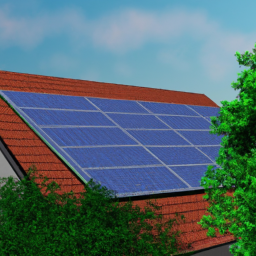
Incorporating renewable energy sources is a great way to decrease reliance on fossil fuels and reduce carbon emissions. By harnessing the power of renewable energy, such as solar or wind, you can make your home more eco-friendly and contribute to a cleaner environment. One important aspect to consider when incorporating renewable energy sources is the storage of this energy. Renewable energy storage systems allow you to store excess energy generated during peak production times and use it when there is high demand or low production.
When it comes to renewable energy storage, there are various options available. One popular choice is battery storage systems, which store electricity generated from solar panels or wind turbines for later use. These batteries can be charged during the day when the sun is shining or when the wind is blowing, and then provide power during nighttime hours or when there is less sunlight available.
To encourage homeowners like yourself to invest in renewable energy sources and storage systems, many governments offer incentives and subsidies. These incentives can help offset the initial costs of installing solar panels or purchasing battery storage systems. Additionally, some governments may provide tax credits or grants for renewable energy projects.
Choosing Eco-Friendly Building Materials
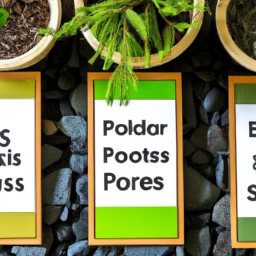
Choosing eco-friendly building materials is a smart way to minimize the environmental impact of construction projects. When it comes to sustainable flooring options, there are several choices that can help you reduce your carbon footprint. One popular option is bamboo flooring. Bamboo grows quickly and regenerates easily, making it a highly renewable resource. Another choice is cork flooring, which is made from the bark of the cork oak tree. This material is not only environmentally friendly but also provides excellent insulation and sound absorption properties.
In addition to sustainable flooring options, using eco-friendly insulation materials can further enhance the energy efficiency of your home. One such material is cellulose insulation, which is made from recycled paper products treated with non-toxic chemicals for fire resistance. This type of insulation not only reduces heat loss but also helps regulate indoor temperature and reduce noise pollution.
Another eco-friendly insulation option is wool insulation, which is derived from natural sheep’s wool. Wool has excellent thermal properties and does not release harmful gases or fibers into the air during installation or use.
Maximizing Water Efficiency
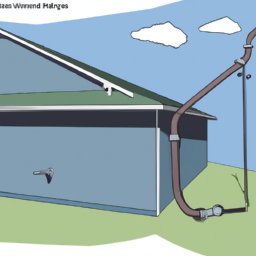
Maximizing water efficiency can be achieved by installing low-flow fixtures and using rainwater harvesting systems. By implementing these water saving tips, you can significantly reduce your water consumption and contribute to a more sustainable environment.
One of the simplest ways to conserve water is by installing low-flow fixtures in your home. Low-flow showerheads and faucets are designed to limit the amount of water that flows through them without compromising performance. These fixtures can help you save hundreds of gallons of water each year.
Another effective method for maximizing water efficiency is by utilizing rainwater harvesting systems. Rainwater harvesting involves collecting and storing rainwater from rooftops or other surfaces for later use. This harvested water can be used for various purposes such as watering plants, washing cars, or even flushing toilets. It not only reduces your reliance on municipal water sources but also helps alleviate strain on local water supplies.
To further enhance your water-saving efforts, consider incorporating other practices such as fixing leaks promptly, watering plants during cooler parts of the day, and using a broom instead of a hose to clean outdoor areas. Additionally, practicing mindfulness when it comes to water usage, such as turning off the tap while brushing your teeth or taking shorter showers, can make a significant difference in conserving this precious resource.
Promoting Sustainable Transportation Options

One of the easiest ways to reduce your carbon footprint is by using sustainable transportation options, such as biking or taking public transit. Public transportation alternatives and bike sharing programs have become increasingly popular and accessible in many cities worldwide, offering convenient and eco-friendly ways to get around.
Public transportation systems like buses, trains, and trams are not only efficient but also significantly reduce greenhouse gas emissions. By opting for public transit instead of driving alone in a car, you can contribute to reducing air pollution and traffic congestion. Many cities now offer comprehensive public transportation networks with affordable fares, frequent schedules, and comfortable vehicles equipped with modern amenities.
Another excellent option for sustainable transportation is bike sharing programs. These initiatives provide shared bicycles that can be rented for short trips within a city. Bike sharing not only promotes physical activity but also helps decrease reliance on fossil fuels for commuting purposes. With docking stations conveniently located throughout urban areas, you can easily rent a bike whenever needed and drop it off at any designated station after reaching your destination.
Creating a Chemical-Free Living Environment

To create a chemical-free living environment, you can start by using natural cleaning products and opting for organic and non-toxic materials in your home. By making these simple changes, you can significantly reduce the exposure to harmful chemicals that are commonly found in conventional cleaning products and home decor items.
When it comes to cleaning your home, there are plenty of non-toxic alternatives available. Look for cleaning products that are labeled as "green," "natural," or "eco-friendly." These products are typically made from plant-based ingredients and do not contain harsh chemicals like ammonia or bleach. You can also make your own cleaning solutions using common household items such as vinegar, baking soda, and lemon juice.
In addition to using non-toxic cleaning products, consider incorporating organic and non-toxic materials into your home decor. Organic textiles, such as cotton or linen, are grown without the use of synthetic fertilizers or pesticides. This means they are free from harmful chemicals that can off-gas into the air you breathe. Choose furniture made from sustainably sourced wood or opt for second-hand pieces to reduce waste.
Creating a chemical-free living environment is not only better for your health but also for the planet. By choosing non-toxic cleaning products and organic home decor, you can contribute to a cleaner and healthier future for yourself and future generations.
Cultivating a Sustainable Garden or Green Space
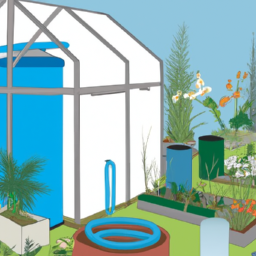
When cultivating a sustainable garden or green space, you can start by composting organic waste to nourish the soil and reduce landfill waste. Composting is a simple and effective method that allows you to recycle kitchen scraps, yard trimmings, and other organic materials into nutrient-rich compost. This compost can then be used as a natural fertilizer for your plants, eliminating the need for synthetic chemicals.
In addition to traditional gardening methods, vertical farming has gained popularity in recent years as an innovative way to maximize limited space while reducing water usage and carbon footprint. By growing plants vertically using techniques such as hydroponics or aeroponics, you can produce higher yields in smaller areas compared to traditional horizontal farming methods.
To get started with composting, gather your organic waste such as fruit and vegetable scraps, coffee grounds, eggshells, and leaves. Mix these materials together in a compost bin or pile and regularly turn them to promote decomposition. It’s important to maintain the right balance of carbon-rich "browns" (such as dry leaves) and nitrogen-rich "greens" (such as food scraps) for optimal decomposition.
When it comes to vertical farming, there are various methods you can explore. Hydroponics involves growing plants without soil by using nutrient-rich water solutions instead. Aeroponics takes this a step further by misting plant roots with nutrients suspended in air rather than submerging them in water. These techniques not only save water but also allow for year-round growth regardless of climate conditions.
Educating and Engaging the Household in Eco-Friendly Habits

Engaging the household in eco-friendly habits can be achieved through simple daily actions like recycling, conserving energy, and reducing water consumption. Adopting an eco-friendly lifestyle is not only beneficial for the environment but also contributes to sustainable living. By implementing these practices, you can reduce your carbon footprint and create a greener home.
Recycling is one of the easiest ways to promote sustainability at home. Make sure to separate recyclable materials from regular waste and dispose of them properly. This small step can significantly reduce landfill waste and conserve resources.
Conserving energy is another crucial aspect of an eco-friendly lifestyle. Turn off lights when they’re not in use, unplug electronic devices when they’re fully charged or not being used, and switch to energy-efficient appliances. These actions help minimize energy consumption and lower utility bills.
Reducing water consumption is equally important for sustainable living. Fix any leaks promptly, install low-flow showerheads and faucets, collect rainwater for outdoor use, and practice mindful water usage during everyday activities like brushing teeth or doing dishes.
Educating yourself and your household members about the importance of these eco-friendly habits is essential for long-term sustainability. By creating awareness and making these practices a part of your daily routine, you can contribute towards building a more environmentally friendly home and planet.
Frequently Asked Questions
What Are Some Simple Ways to Reduce Energy Consumption in the Home?
To reduce energy consumption in your home, start by investing in energy efficient appliances. These appliances use less electricity and can help lower your overall energy usage. Additionally, consider integrating smart home technology into your daily routine. Smart thermostats, for example, allow you to control the temperature of your home remotely, optimizing energy usage. By making these simple changes, you can significantly reduce your carbon footprint and contribute to a more eco-friendly home.
How Can I Properly Dispose of Hazardous Household Waste?
Proper disposal of hazardous household waste is crucial for a safer and cleaner environment. To ensure eco-friendly alternatives, start by identifying the types of hazardous waste you have, such as batteries, paint cans, or cleaning products. Research local recycling centers or drop-off locations that accept these items. Some stores also offer take-back programs. Always follow instructions for packaging and transportation to minimize any potential harm to yourself and the environment.
What Are Some Renewable Energy Sources That Can Be Easily Implemented in a Home?
To make your home more eco-friendly, you can implement renewable energy sources such as solar panels and wind turbines. Solar panels harness the power of the sun to generate electricity for your home, while wind turbines convert wind energy into usable power. These green technologies are becoming increasingly accessible and affordable, allowing homeowners to reduce their reliance on fossil fuels and lower their carbon footprint. By incorporating these renewable energy sources, you can contribute to a greener future for our planet.
Are There Any Eco-Friendly Building Materials That Are Also Cost-Effective?
When it comes to eco-friendly building materials, there are definitely some cost-effective options available. Sustainable and affordable materials are becoming more popular in the construction industry. From recycled steel to bamboo flooring, there is a wide range of eco-friendly construction materials to choose from. These affordable sustainable building materials not only reduce your carbon footprint but can also save you money in the long run by improving energy efficiency and durability. So, consider incorporating these cost-effective green building materials into your home for a greener future.
How Can I Conserve Water in My Daily Household Activities?
To conserve water in your daily household activities, there are a few practical steps you can take. Consider installing low flow fixtures, such as faucets and showerheads, which reduce water usage without sacrificing performance. Additionally, you can explore rainwater harvesting systems to collect and utilize rainwater for tasks like watering plants or washing clothes. These simple changes can make a big difference in reducing your water consumption and making your home more eco-friendly.
Conclusion
In conclusion, by implementing these eco-friendly practices in your home, you can significantly reduce your environmental impact and contribute to a more sustainable future. Assessing and reducing energy consumption, implementing sustainable waste management practices, incorporating renewable energy sources, choosing eco-friendly building materials, maximizing water efficiency, promoting sustainable transportation options, creating a chemical-free living environment, cultivating a sustainable garden or green space, and educating and engaging the household in eco-friendly habits are all practical steps that can be easily integrated into your daily life. So why wait? Start making your home more eco-friendly today and make a positive difference for our planet.